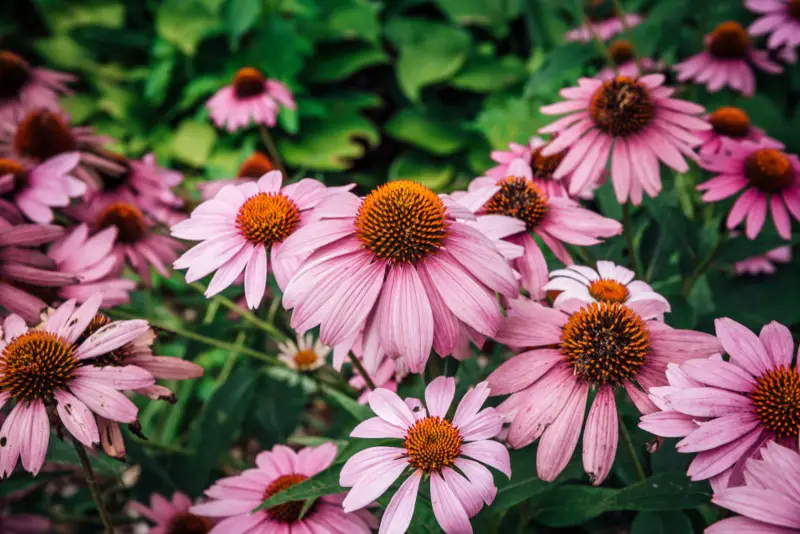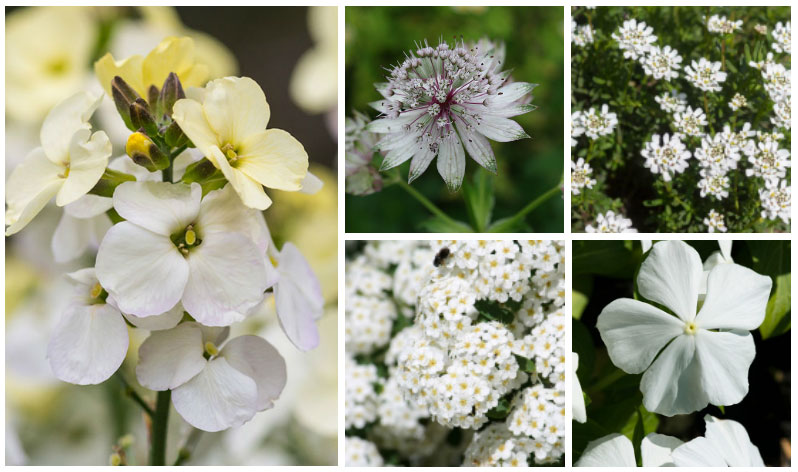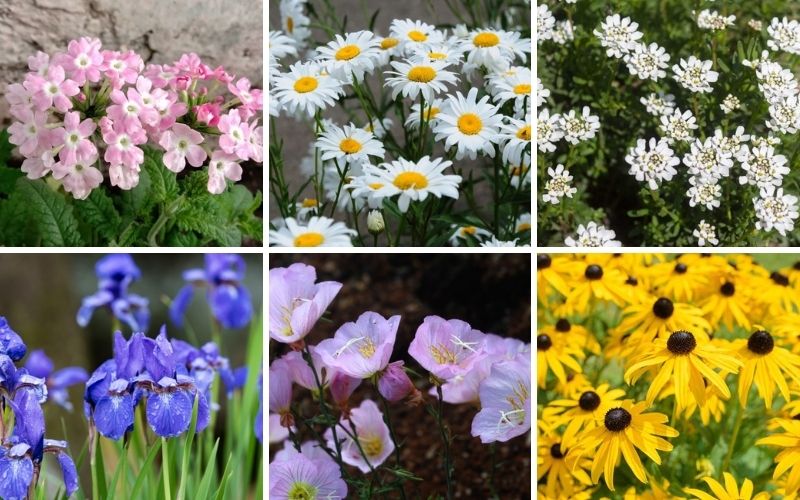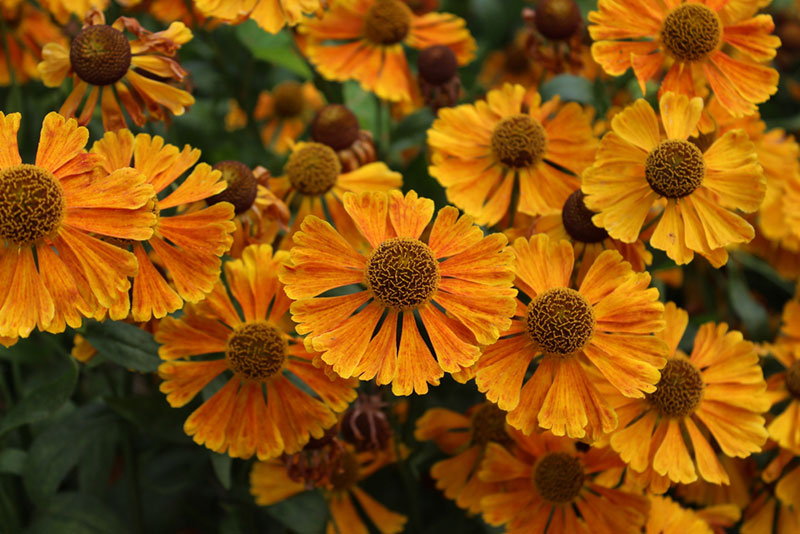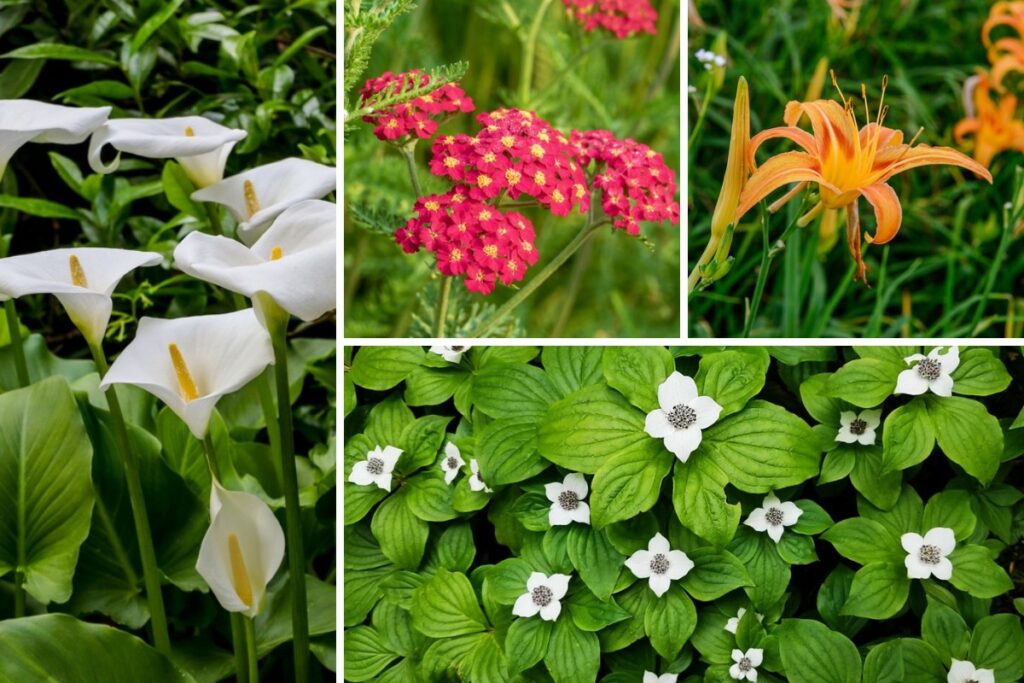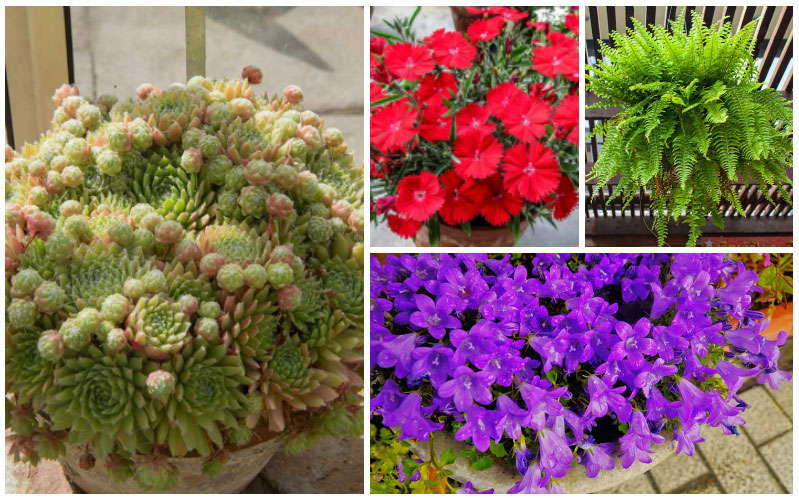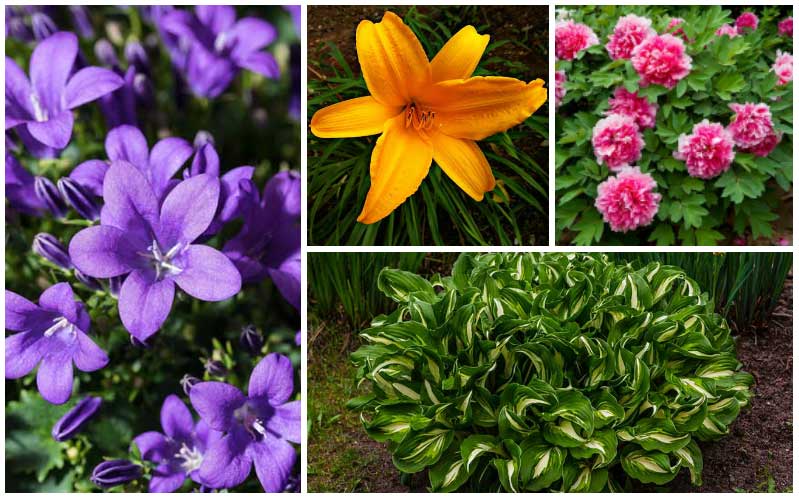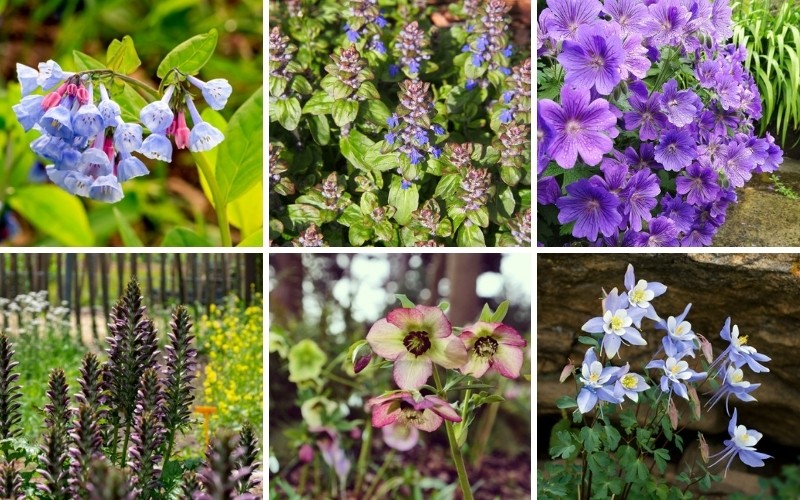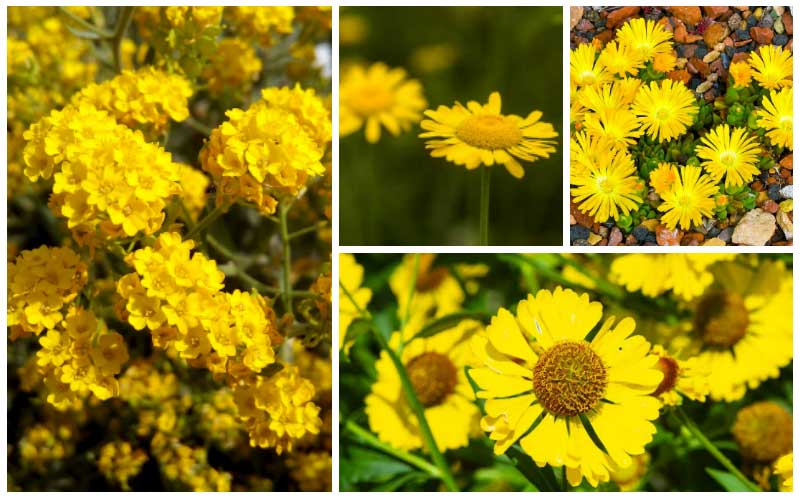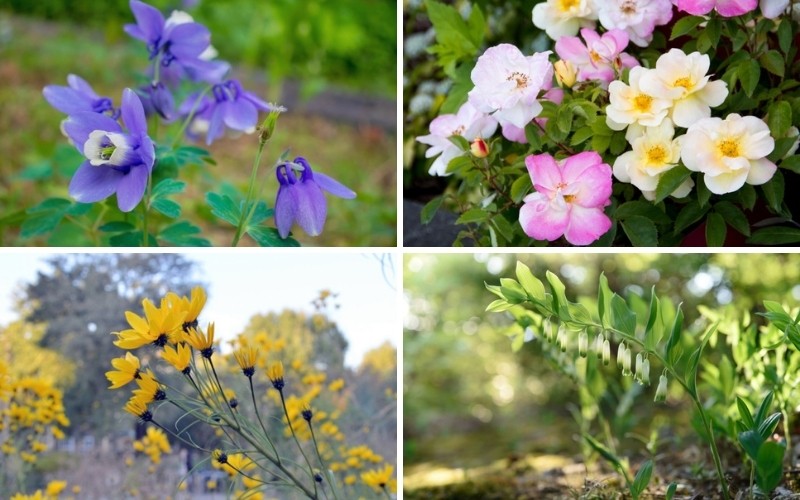
A low-maintenance garden needs at least some perennials that re-bloom each year with little help. Yet maintenance isn’t the only factor that makes a garden optimal; you also have to consider available space and how best to show off those blooms and beautiful foliage.
Plants that remain very short, even when fully grown, are fantastic as borders and container plants, as well as for groundcover.
Dwarf cultivars are shorter than other cultivars of the same species or genus of plants. There’s no one height limit for dwarf plants; if you buy something labeled as a dwarf plant, that label just means its full height should be shorter than the height of a non-dwarf variety. It’s essential that you pay attention to the labeled height and spread of the cultivar because that information lets you know if the variety is truly suitable for the spot you want to plant it in.
1. Dwarf or compact lavender (Lavandula spp.)

Lavender is a versatile garden perennial that attracts bees and gives off a distinct scent. Look for dwarf varieties that grow less than 2 feet tall when in bloom, such as L. angustifolia, or English lavender. Its dwarf varieties typically stay under 2 feet with many reaching only 1 1/2 feet when in bloom. Most varieties have light or dark purple blooms, but ‘Nana Alba’, also called ‘Dwarf White’ and ‘Baby White’, has white blossoms. It stays under a foot tall and would be perfect as a spot filler in a garden.
2. Low-growing phlox (Phlox spp.)
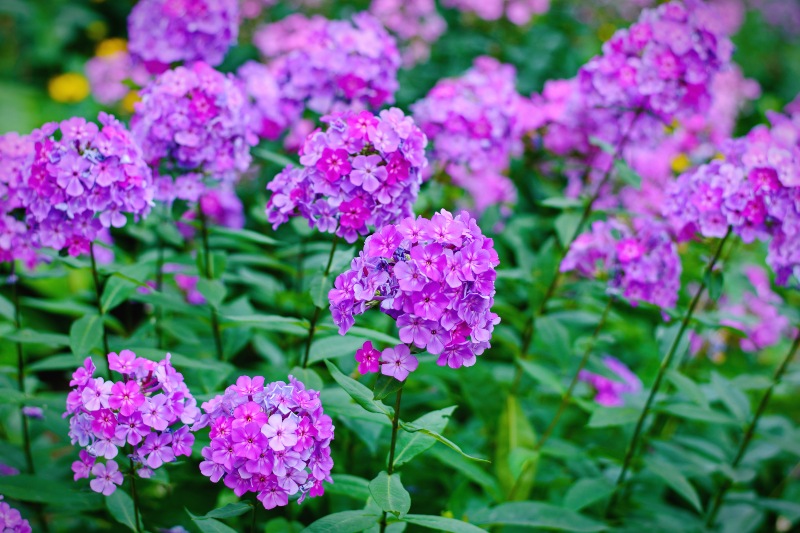
Phlox is another plant that has both tall and low-growing versions, and the low growers produce amazing swathes of flowers in a variety of colors. You can find white, hot pink, blue, and other colors in heights under 1 1/2 feet. Phlox sublata is short, reaching only about half a foot and loving full or partial sun, while P. stolonifera and P. divaricata reach about a foot in preferably shaded conditions. P. paniculata ‘Bartwelve’ is a dwarf variety that can grow to 1 1/2 feet that loves full sun. All varieties need well-draining soil and protection from frost.
3. Dwarf fountain grass (Pennisetum alopecuroides ‘Hameln’)
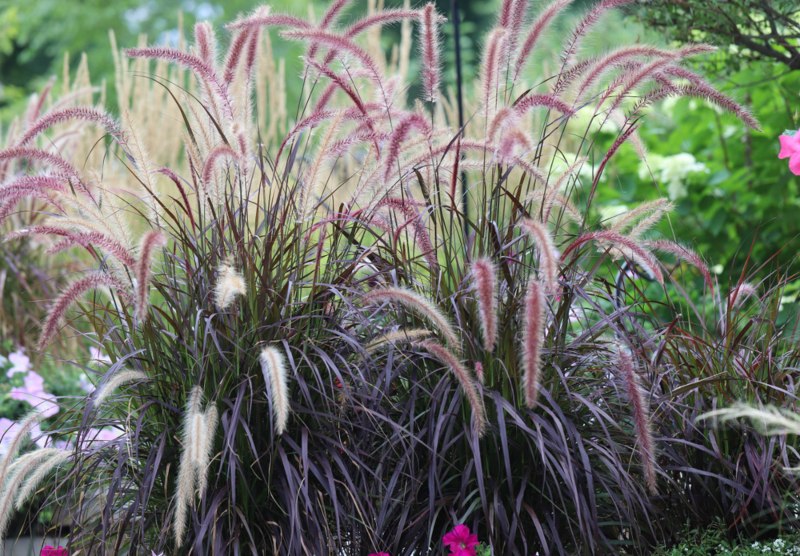
Fountain grass produces mounds of soft blades with fuzzy foxtails at the ends. Like most fountain grasses, ‘Hameln’ stays under 3 feet. Give it partial to full sun in well-drained soil – it does just fine in chalky or loamy soils – and use it as an edge either along a pathway or at the water’s edge. Don’t soak the soil, but keep it moist. Despite its love of water, it’s fairly drought-tolerant and deer-resistent. Birds like it, though.
4. Perennial dianthus, or pinks (Dianthus spp.)
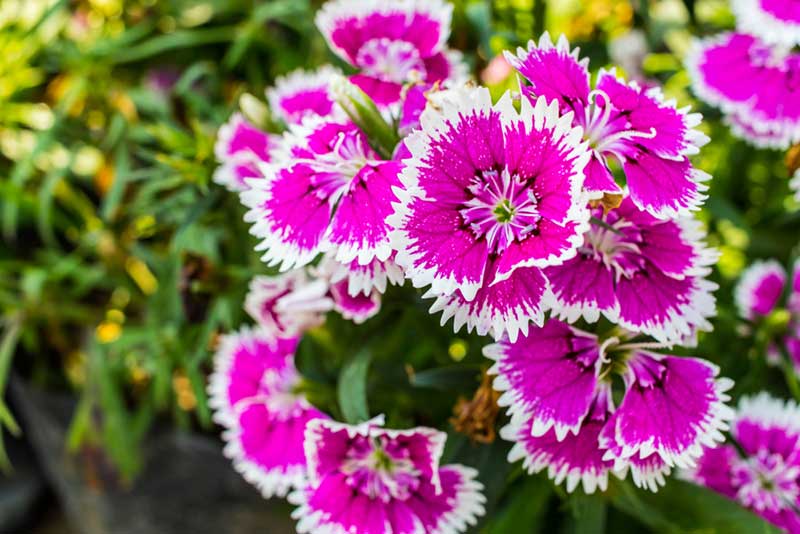
These frilly little flowers with ruffly edges are relatives of the carnation. Despite the common name of “pink,” perennial dianthus (there are annual and biennial versions, so look out) come in a range of colors, with hot pink, red, and purple very popular. Give the plants full sun for at least six hours daily. Wear gloves when handling the foliage and keep pets and kids away as the leaves can irritate skin. Deadhead to encourage new blooms.
5. Dwarf wild coumbine ‘Little Lanterns’ (Aquilegia canadensis)
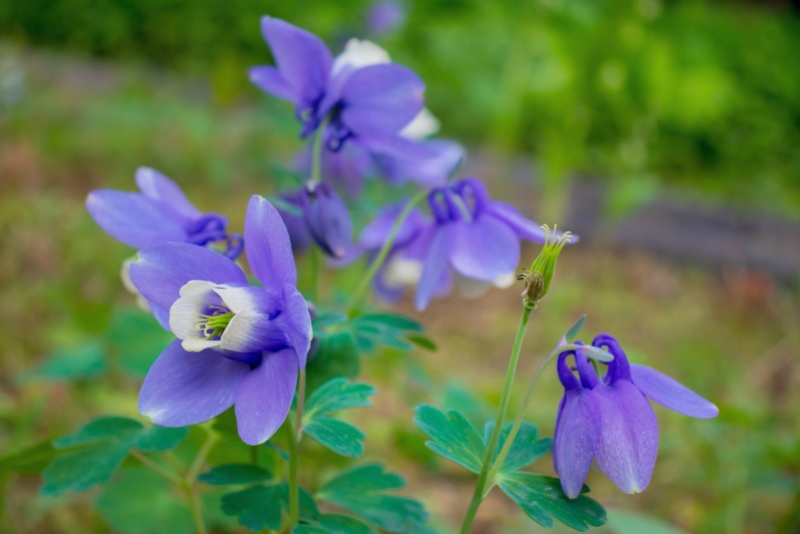
This dwarf columbine – growing only to 1 1/2 feet tall, and often staying under a foot, instead of the 3 feet that columbine normally reaches – has showy red and yellow flowers that look like comets with spiky tails. The flowers are favorites of hummingbirds, and this is a very easy plant to grow. It can take full sun to partial shade, although sometimes you find a plant that likes shade. Make sure the soil is well-draining; past that, the plant can handle many types of soil.
6. Willow-leaved sunflower (Helianthus salicifolius ‘Low Down’)
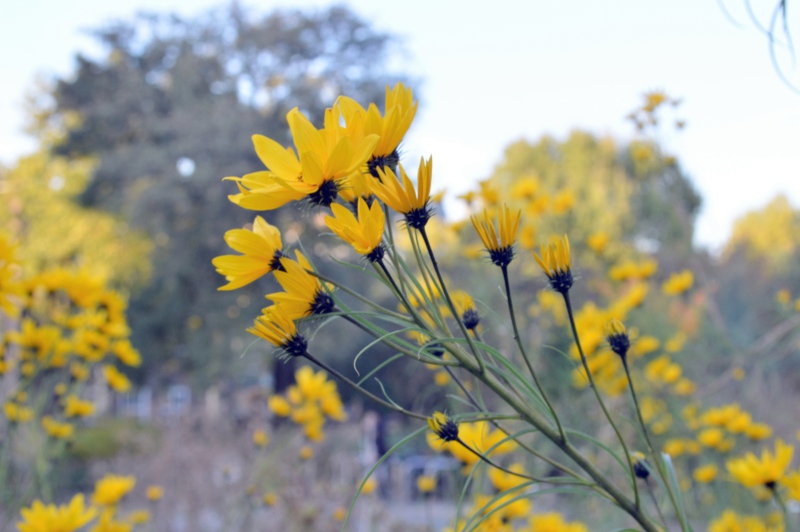
You wouldn’t think of sunflowers when you look at this shrubby mound of daisy-like blossoms, but it is a dwarf relative of the sunflower. As such, it has glorious, bright yellow rays that stick up around brown centers. It stays under a foot tall, loves full sun, can take most types of soil and tolerates clay, attracts birds and butterflies, and resists deer. It’s a tough little plant that adds a lot of color. It can also spread, so be prepared to divide the plant every few years.
7. Turtlehead (Chelone obliqua ‘Rosea’)
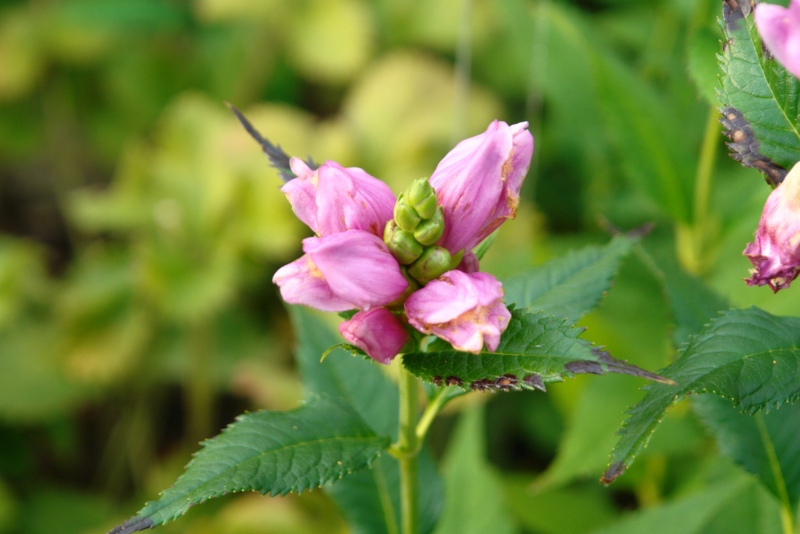
Turtlehead is an interesting plant with fat, pink petals that stay close together, like a turtle’s head. The flowers grow in clusters that stick up just a bit above bushy green foliage with serrated leaf edges. It’s a great plant for wetter soils and stays under 3 feet. It can self-seed if left in wet soil. This is perfect for areas that tend to be more swampy or that are along stream banks. Butterflies love it.
8. Dwarf Solomon’s seal (Polygonatum humile)
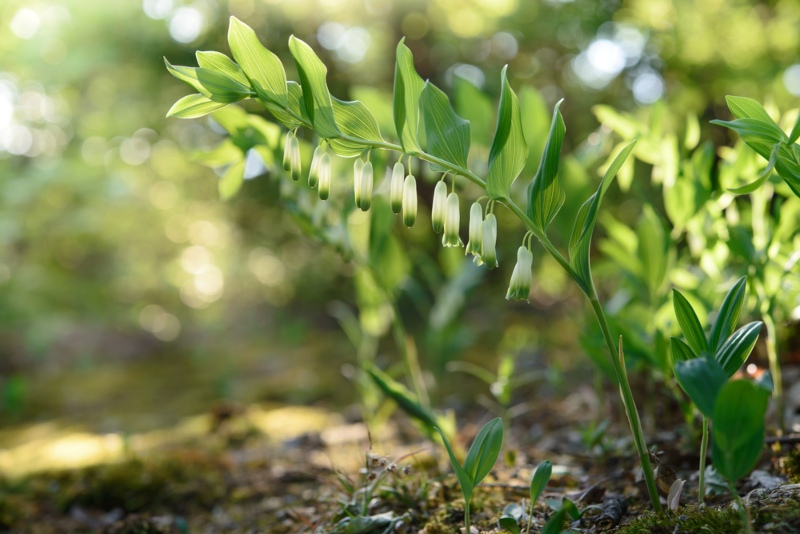
If you have areas in the garden that are too shady for most plants and that have moist soil, dwarf Solomon’s seal is a perfect choice. This low-growing groundcover reaches only about 9 inches or so in height. This does spread via rhizome but does it slowly. The plant produces small, drooping white flowers that produce small berries that are toxic, so do not let small children near these when the plants produce fruit.
9. Dwarf cardinal flower (Lobelia × speciosa ‘Grape Knee-High’)
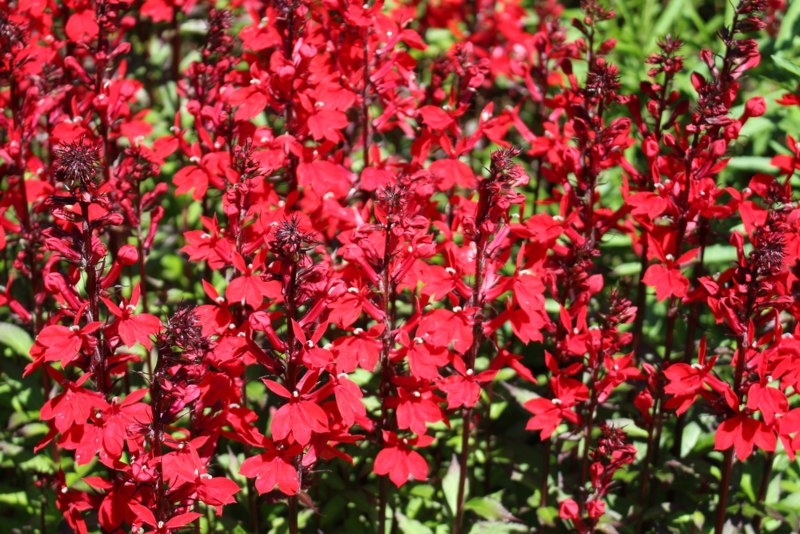
Another bog-friendly plant is dwarf cardinal flower. This plant likes more sun the farther north you go, but no matter the geographical location, it wants wet soil. The plant produces upright stalks of purple flowers that appear to tower over the foliage, even though the dwarf variety stays under 2 feet. Mulch around the roots in winter to protect them from cold conditions.
10. “Peach Lemonade” rose (Rosa ‘redpastel’)
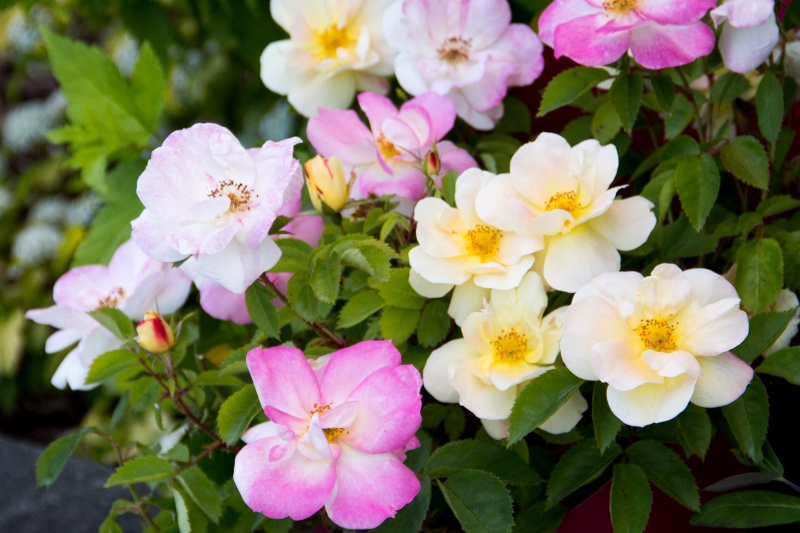
What would a perennial garden be without a rose bush? Roses come in so many shapes and sizes that it’s no surprise that there are shorter versions that work well in compact spaces. The “Peach Lemonade” rose is disease-resistant, loves sun, and stays under 3 feet tall. Bountiful flowers start off yellow but gradually change color to a blush pink. The blossoms are self-cleaning, meaning they drop off on their own; deadheading is pretty much a formality with this plant.





